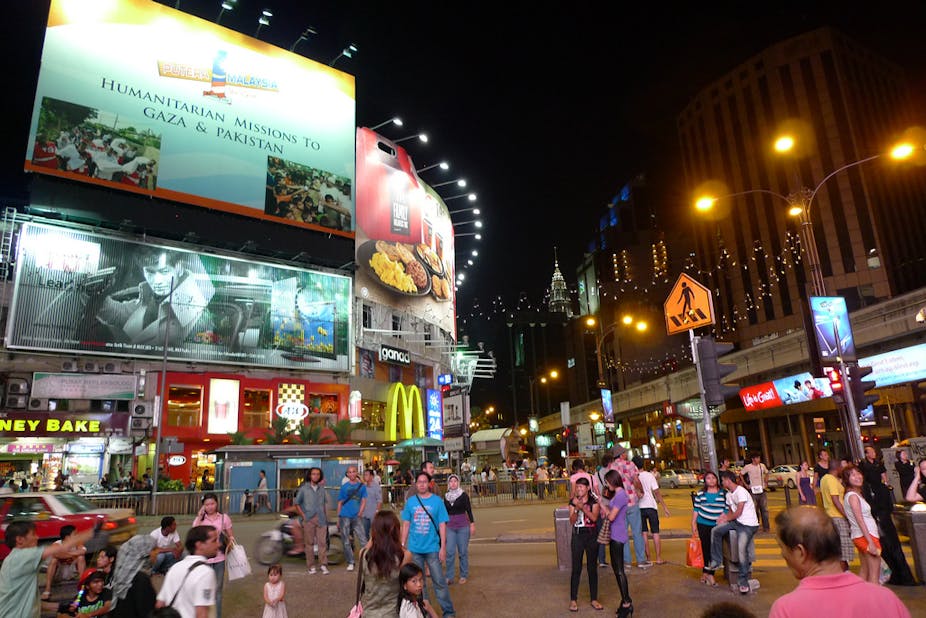We are in the midst of a global epidemic of chronic diseases – diabetes, heart disease, cancers and respiratory disease are on the rise across the world. Posing a real and increasing threat to health and prosperity, these diseases affect all populations, in particular, the world’s poorest and most marginalised.
Simultaneously, the world is rapidly urbanising – over half the world’s population now lives in urban settings. An acknowledged driver of chronic disease, urbanisation and urban living must become a stage for good health rather than its opposite.
Acknowledging the context
The way we live, access to education and employment, quality of housing and the environments in which we work and play all profoundly shape our health.
Industrialisation has seen social and economic innovation – finding ways to increase productivity in a range of sectors while reducing physical activity. Our diets have also changed drastically with this – we eat food that comes in larger portions, is increasingly processed, endlessly available and more energy-dense.
Put together, there’s now an energy imbalance between what we eat, and the energy we expend. This leads to obesity and related chronic diseases - but it’s not simply due to people making poor choices.
Many people see the current obesity epidemic as an issue of “calories in, calories out”. But a significant reason why people are increasingly overweight is because the default position for the modern, urban citizen is being overweight. Our cities are not designed to make healthy living easy - and this stands for many low-, middle- and high-income settings.
If we are to tackle chronic diseases, public policy must strive towards this key mantra – make healthy choices the easy choices. It’s pointless to continue struggling with attempts to coerce populations into making healthy choices while allowing the expansion of increasingly obesogenic urban environments. Urban settings must be fundamentally altered to make healthy behaviours the path of least resistance.
Making good health easier
But can healthy public policy really make a difference? Consider the case of Denmark, a high-income country with a similar GDP (gross domestic product) to Australia, the United Kingdom and the United States. Yet, with a record of intelligent social and planning policies, Denmark has an obesity rate around half that of Australia or the United States.
Denmark’s capital, Copenhagen, represents a blueprint urban environment with key social policies structured towards making good health easier. High-quality, ubiquitous bike lanes, efficient public transport and safe green spaces result in 40% of the population commuting to work by bicycle – simply because biking is the cheapest and easiest option for getting around, and it’s safe.
The city also mandates regularly spaced small, accessible supermarkets throughout suburban and central districts. Not only does this result in increased competition and reduced consumer prices, it also means that every citizen passes by fresh food options on their daily commute. This maximises the opportunity for incidental food shopping.
Town planning considerations, coupled with strict laws on frequency and signage of fast-food businesses, help to promote home cooking and create barriers to unhealthy eating.

Take-out food is also less accessible. Reflecting high commercial rents and taxation, a Big Mac meal, for example, costs around AU$15, approximately twice the price in Australia. It’s hardly a surprise then, that there’s just a handful of McDonalds restaurants in the city of 1.2 million. There are also stricter laws around advertising these foods.
Looking to a healthier future
Clearly, progress has been made in cities outside of Denmark, and the global expansion of bike-sharing programs, the “Copenhagenize” movement as well as increasing attention on food advertising are good reflections of this. But many efforts are thwarted by the simple fact that, for many, disease has become easier to achieve than health.
If making the healthy option the easy option is the goal, we need to take a hard look at our public environments as exemplars for healthy living. What then is the place for fast-food outlets in public hospitals? Should we follow New York Mayor Michael Bloomberg’s lead and consider bans on fast food and sugary drinks in these places, including soft-drink vending machines?
We need to rethink the way our societies are structured so that chronic disease prevention and healthy living become the default option for individuals. The current paradigm in which medical and public health communities promote healthy behaviours while societies continue to build social environments conducive to the opposite, is a waste of time and money.
The easy option, wherever possible, must become the healthy option and our society should strive to create built environments conducive to this.
We don’t want to force health on populations, or limit citizen choice – we simply want to create an even playing field. As a society, it’s time we acknowledge that it’s unrealistic to continue creating environments conducive to diabetes, heart-disease and cancers, and then blame individuals for getting ill.
The authors would like to acknowledge the valued contribution of Kyra-Bae Snell to this article.

